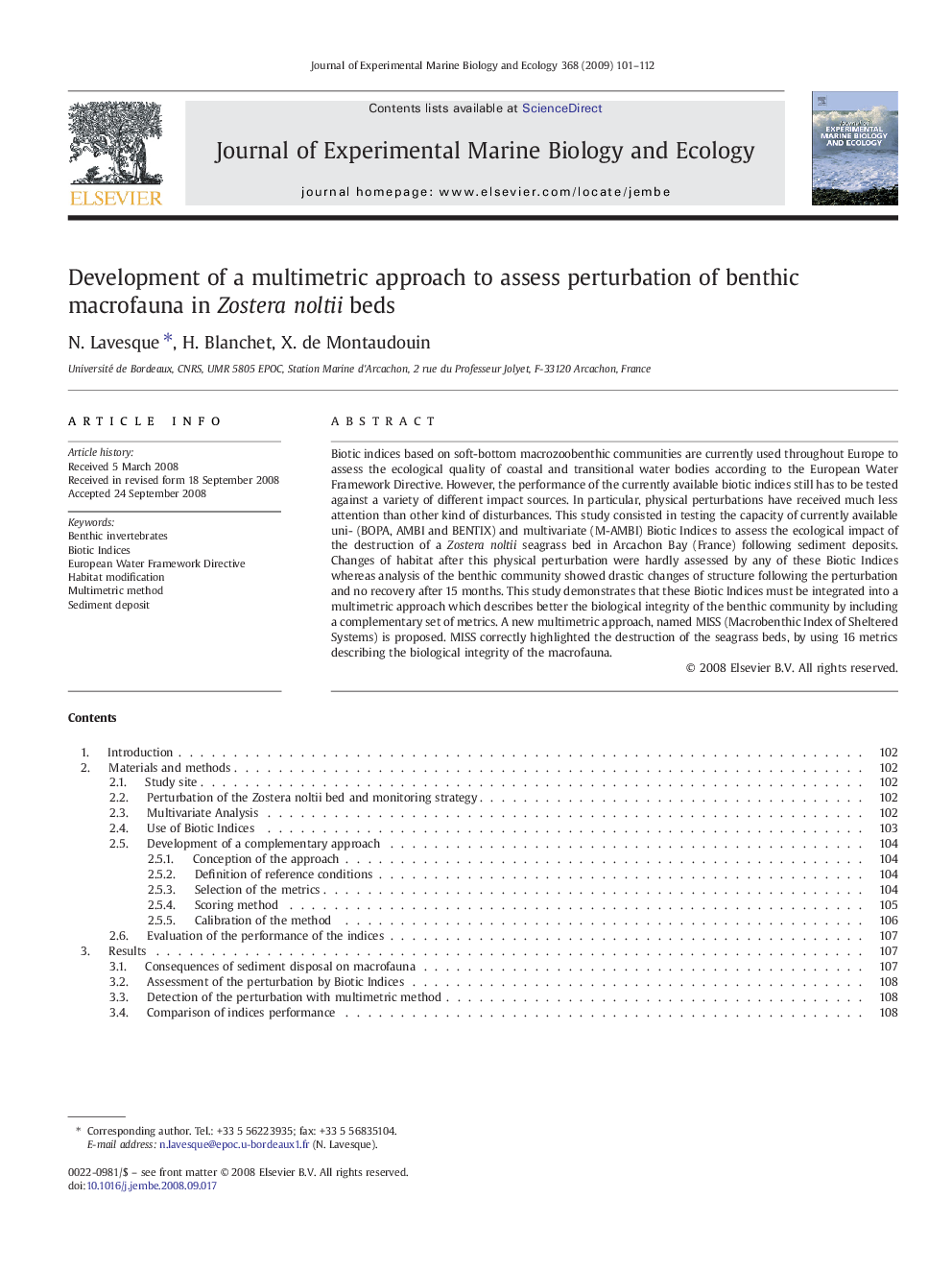| Article ID | Journal | Published Year | Pages | File Type |
|---|---|---|---|---|
| 4397100 | Journal of Experimental Marine Biology and Ecology | 2009 | 12 Pages |
Biotic indices based on soft-bottom macrozoobenthic communities are currently used throughout Europe to assess the ecological quality of coastal and transitional water bodies according to the European Water Framework Directive. However, the performance of the currently available biotic indices still has to be tested against a variety of different impact sources. In particular, physical perturbations have received much less attention than other kind of disturbances. This study consisted in testing the capacity of currently available uni- (BOPA, AMBI and BENTIX) and multivariate (M-AMBI) Biotic Indices to assess the ecological impact of the destruction of a Zostera noltii seagrass bed in Arcachon Bay (France) following sediment deposits. Changes of habitat after this physical perturbation were hardly assessed by any of these Biotic Indices whereas analysis of the benthic community showed drastic changes of structure following the perturbation and no recovery after 15 months. This study demonstrates that these Biotic Indices must be integrated into a multimetric approach which describes better the biological integrity of the benthic community by including a complementary set of metrics. A new multimetric approach, named MISS (Macrobenthic Index of Sheltered Systems) is proposed. MISS correctly highlighted the destruction of the seagrass beds, by using 16 metrics describing the biological integrity of the macrofauna.
